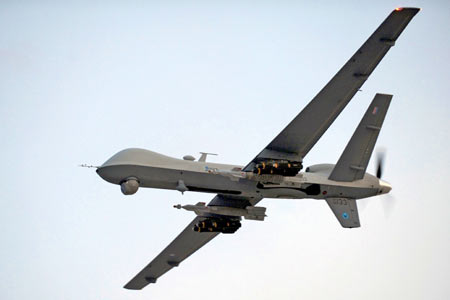- +91-8624883983
- info@insightsmicro.com
Military Unmanned Systems : Trending Facts & Insights

Defense refers to the various types of unmanned vehicles that require automation and human control in the form of military unmanned systems. This new development in warfare has transformed its conduct toward injury prevention and increased productivity during combat. As artificial intelligence, robotics, and sensor systems continue to develop, defense forces are consistently anticipating the introduction of more advanced structures in the context of asymmetric defense forces.
The How big a share will the military unmanned systems markets occupy globally? Experts predict that factors such as defense expenditure, innovations, and changes in warfighting due to improved technologies will shape this market. According to the most recent research, the value of this market in 2023 was valued at around $15 billion, and it, of course, doubled to $30 billion by 2030, as the market grows at an annual rate of between 7% and 10% within this period.
Global Military Unmanned Systems Industry
Overview
Defense refers to the various types of unmanned vehicles that require automation and human control in the form of military unmanned systems. This new development in warfare has transformed its conduct toward injury prevention and increased productivity during combat. As artificial intelligence, robotics, and sensor systems continue to develop, defense forces are consistently anticipating the introduction of more advanced structures in the context of asymmetric defense forces.
The How big a share will the military unmanned systems markets occupy globally? Experts predict that factors such as defense expenditure, innovations, and changes in warfighting due to improved technologies will shape this market. According to the most recent research, the value of this market in 2023 was valued at around $15 billion, and it, of course, doubled to $30 billion by 2030, as the market grows at an annual rate of between 7% and 10% within this period.

Types & Definition
The industry of military unmanned systems focuses on the growth, manufacture, and usage of unmanned airplanes, remote vehicles, and sea vehicles to perform various functions in the military. This sector uses state-of-the-art technologies, including artificial intelligence (AI) and the Internet of Things (IoT), which assist in enhancing intelligence on the battlefield, accurate attacks, and efficient logistics.
1. Drones refer to Unmanned Aerial Vehicles (UAVs): which are used to carry out the roles of surveillance, reconnaissance, and engagement (for instance, Predator drones).
2. Unmanned Ground Vehicle (UGV): These are vehicles that are fitted with various control systems and technologies to fit the roles of reconnaissance, mine paving, and other functions such as MARS or Ripsaw.
3. Unmanned Maritime Systems (UMS): These are vessels with both surface and subsurface capabilities operating independently within a fleet, for example, Sea Hunter and Remus.
4. Space Systems: These are systems with satellite capabilities and autonomous spacecraft used for communication and military intelligence purposes.
Industry Trends
Increasing National Defense Expenditures: Countries allocate more budgets towards the development of unmanned defense systems that upgrade the capabilities of their armed forces.
The growing extent of AI and automation technology has demonstrated innovative self-recipe-making capabilities.
Increasing Demand for Anatomical UAVs:
There has been an increase in invasions and a growing demand for defense spending.
The use of unmanned vehicles has increased in many departments of major institutions.
Facts & Insights
There is increasing use of swalleticated swarth design, thus managing the swarms of drones in a controlled manner.
The advancements in some areas are exciting and may improve the effectiveness of military systems; one of these is the introduction of autonomous target recognition that employs AI to improve the capabilities of military UAVs.
Building and deploying hypersonic and stealth UAVs is a central focus of research and development in the military.
The ‘Pentagon’s’ Skyborgs program, powered solely by AI, projects aim
A recent increase in the threat and usage of UAVs by different actors is leading to an increase in the requirement for anti-drone systems behaviors.
Market Segment
1. On the basis of the platform
– Aerospace
– Land
– Maritime
2. According to the application, the military unmanned systems may involve
– Espionage, Surveillance, and Reconnaissance (ISR)
– Operational Warfare
– Supporting activities and logistics
– Recovery Operations
3. Considering geography.
– The US and Canada
– Western and Central Europe
– Asian region
– The Gulf and African regions
– Central and South America.
Industry Leader
1. Lockheed Martin Corporation: Specializes in the development of sophisticated UAVs and prototypes like the RQ-17.
2. Northrop Grumman: Develops drones such as the RQ-4 Global Hawk and the X-47B.
3. The Boeing Military Aerospace and Defense Unit especially focuses on autonomous tankers such as the MQ-25 Stingray.
4. General Atomics Aeronautical Systems: This company is responsible for the development of the MQ-9 Reaper UAV.
5. BAE Systems: Engaged in unmanned aerial and undersea combat vehicle programs.
6. Raytheon Technologies: Designs high-performance radars among other AI-enabled unmanned aerial vehicle weapons.
7. Israel Aerospace Industries (IAI): Working toward the manufacture of Heron TP and Harpy UAVs.
8. Elbit Systems: Core competence in developing AI-based systems for UAVs and robotics for combat use.
9. Thales Group: Focusing on building highly sophisticated unmanned maritime systems.
10. Saab Group engaged in this is a stealth inbuilding technology aimed at UAVs and other allied autonomous technologies.